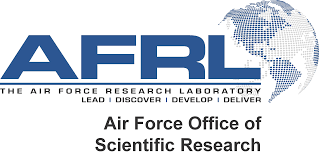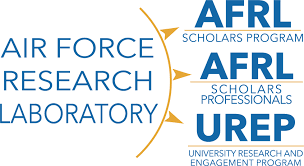
AFOSR continues to expand the horizon of scientific knowledge through its leadership and management of the Department of the Air Force’s basic research program. As a vital component of the Air Force Research Laboratory (AFRL), AFOSR’s mission is to discover, shape, champion, and transition high risk basic research to profoundly impact the future Air and Space Force. AFOSR accomplishes its mission by cultivating scientific breakthroughs into world-class solutions to boldly go where no science has gone before. The FUTURE begins with Basic Research!
AFOSR distributes its basic research program investment through 1,200 grants at over 200 leading academic institutions worldwide, 100 industry-based contracts, and more than 250 internal AFRL research efforts. With its staff of highly trained scientists and engineers, AFOSR manages the Air Force basic research program via three key partnerships.
Draft Idea Statement & Contact Program Officer
Next, scope and draft your idea statement. Your idea statement doesn’t have to be all-inclusive, but it should address the unique value proposition of the research and be specific enough that it catches the interest of the Program Officer (PO).
With your idea statement ready to go, it’s time to reach out to the PO point of contact listed in the AFOSR BAA. After discussing your idea statement with the PO, some will want a specifically formatted white paper, while others may want to have follow-up conversations in-person, over the phone, or via email. If your idea seems promising, the PO will initiate an ongoing dialogue setting up expectations and explaining the process for full proposal submission.
Throughout your working relationship with AFOSR, you can expect an AFOSR PO to take on a number of roles:
- Topical / Program Expert
- Educator / Communicator
- Team Builder
- Advocate
- Evaluator
- Administrator
- Active Member of AFRL, DoD & Scientific Communities

Apply for Grant Funding
Air Force Office Of Scientific Research Grants: Before submitting a full proposal, be sure to determine the correct funding mechanism. There are a number of different funding opportunities for universities to obtain basic research grant funding and each has its own purpose and associated requirements.
- Traditional grants
- University Research Initiatives (i.e. MURI, DURIP)
- Special Programs (i.e. HBCU/MSI, YIP)
It is important to note that traditional grants can be awarded year round from the general BAA, while other opportunities may have specific deadlines or qualification criteria.
Once you have worked with your PO to determine the correct funding opportunity, it’s time to submit a full proposal.
A good proposal is one that includes:
- Strong technical merit
- Air Force relevance
- Solid budget justification
- Consideration given to every requirement stated in the BAA
AFOSR receives far more good proposals than it is able to fund in a given year. Therefore, POs must factor many other considerations into funding decisions. Those include, but aren’t limited to:
- Overlap with program interests, and connecting to DoD labs
- Potential for scientific breakthroughs
- Strategic directions
- Budget realities
- Peer review recommendations
Budget Justification Considerations
- For Personnel Management: Discuss realism and reasonableness of the (a) number of personnel, (b) labor mix, (c) level of effort etc.
- For Permanent Equipment (>$5,000/unit and useful life > 1 year): Are all the permanent equipment items special purpose and/or test equipment, interconnected and interdependent, reasonable and acceptable for the work to be performed and of significant value to the project?
- Consumables and Facility Charges: Provide JUSTIFICATION and explanation with respect to proposed research. Provide quotations and/or links to the price structure of consumables, materials supplies, and facility charges.
- Other Direct Costs: Provide justification for direct costs
- Travel: For travel or quantity of trips, (a) rationale for travel, (b) the amount of travel or quantity of trips, and (a) the number of personnel traveling in terms of realism and reasonableness for the work
- Subcontract: Discuss (a) rationale for these costs, (b) why it is necessary, (c) what does it add to the research, and (d) why can it not be accomplished by the awardee/grantee.





